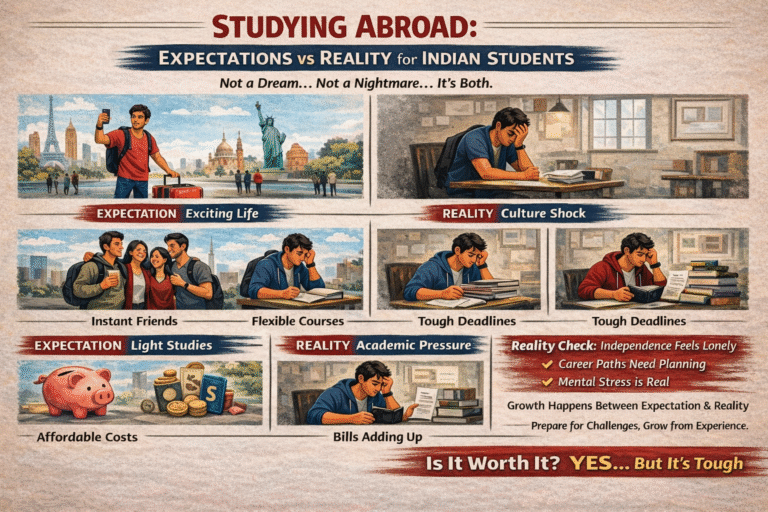Obtaining a US F1 visa requires proof of financial support.
That’s why one of the main reasons a student’s US F1 visa gets rejected is insufficient funds.
So the question arises, how much funds are enough to get the approval for a US student visa for Indian students?
Before knowing the answer to this question you need to know all about a very important document called the I-20 form.
I-20: The most important document For US F1 Visa Approval
Here’s what an I-20 looks like.

I-20 is a certificate of eligibility issued by the SEVP (Student and Exchange Visitor Program).
It states that the student has been admitted to the said university and possesses the financial capability of affording their education while staying in the USA.
An I-20 form indicates that the university has approved your finances, but you must ensure that the visa officers have approved them as well. This begs the question,
How much bank balance is required for F1 visa approval?
Normally you need to show that you can cover at least one year of your expenses including everything.
That means 1.3 to 1.5 times your finances mentioned in the I-20 are enough to get you qualified for the F1 visa.

For example, the total funds mentioned in the above picture for 12 months is – $15,000
So, to qualify for a US F1 visa you’ll need to show proof of 1.3 X 15,000, that is = $ 19,500
How do you show the proof of funds for a US F1 visa?
Once you have calculated the amount, it’s time to show the proof of it.
Here’s a list of all the documents you might require for the proof of funds:
- Affidavit of support -The ‘Affidavit of Support’ is a signed document to accept financial responsibility for a person who is seeking a visa. The document needs to be signed by the person who is sponsoring you.

- Bank statement – Yours or your sponsor’s bank statement for the last 6 months.
- Proof of annual income – ITR returns / Form 16 / salary slips / Income certificate. Any of these documents, whichever is easily available is enough to prove your sponsor’s annual income.
- Proof of liquid savings – FD, mutual funds, PF, etc.
- Proof of other investments – Gold, bonds, shares, properties/long-term assets.
- Scholarship Proof – If your finances are covered in scholarships provided by the university, then it will be mentioned in the I-20. But if some other institute/government is providing you with the scholarship then you need documents to show proof.
- Loan Sanction Letter – If your funds are supported by a loan from any national or international lender, then a loan sanction letter is required. It states the terms and conditions of the loan, the amount, the collateral, etc. It is provided by the bank or the money lender.
Points to remember while collecting these documents:
- Carry a CA’s evaluation report to clear all the doubts the visa officer might have regarding funds.
- Your bank statement should reflect US Dollars so that the visa officer can understand it easily and won’t need to it convert again.
What’s the right way of showing funds?
- Even if you have enough funds, it’s possible that your application might get rejected.
- It might get rejected not because your funds were inadequate, but because they were presented in such a way that they seemed inadequate.
- The display of funds matters a lot. If you want to avoid a rejection then you should avoid mentioning the following forms of funds to prove the estimated cost.
Funds you should avoid:
The estimated cost mentioned in the I-20 form should not be proved by the following funds.
Although, once that limit has been covered, you can show these funds as a backup option.
Stocks/Bonds
The nature of stocks is very volatile. They keep on going up and down every single day. Let’s say you had $32k in your stock last week. It’s possible that this week it has gone down to $30k because of the market. Hence, VISA officers do not trust these kinds of investments.
Real Estate
This option is very tough to liquidate. Properties are not sold within a day. It takes weeks to finalise a proper deal and receive cash.
One only considers selling properties as a last resort if they are in need of cash immediately. Therefore, such funds are not counted by visa officers.
Solvency Letter
It is a letter issued by the bank which is based on your credit history and provides information about your financial stability.
It’s basically an approval provided by the bank saying that you can afford the expenses. Visa officers do not consider them much.
Gold, Cars, Any Property That You Own
Fixed assets do not have a fixed value and their market price fluctuates a lot. Since their values are not guaranteed, you should avoid showing these as proof of funds for a US F1 visa.
Forms in which you should show funds
Any form which can be easily liquidated and doesn’t have a value that fluctuates according to the market is a good way to show proof of an F1 visa.
- Bank statements – Very easy to cash out.
- Loans – Easy to liquidate and are the most preferred way of funding your education.
- Scholarships – Although these will be already mentioned in the I 2O, you will need to show a scholarship letter if your sponsor is other than the university.
- FD – A fixed deposit is like a savings account but with higher interest rates. You can easily break this account and cash out your money. Since the interest rate doesn’t change here and the value is constant, FDs are a solid way of proving your finances for the F1 visa.
- Provident funds – Provident funds or pensions are a great way to sponsor your education. These are fixed and very easy to liquidate. Documents for pensions can be attained from the bank or your employer.
Who can sponsor your education abroad
Anyone who takes responsibility of your education, as well as living expenses in the US, is a legitimate sponsor. They should have a strong financial background.
One thing to keep in mind is that if possible your sponsors should be from India and not the US. Following are all the possible options for a sponsor:
Parents
Your father and mother should be your first option as a sponsor.
Relatives
Any relative can sponsor your education. You will need to mention how you are linked to them in the form. So if possible your sponsors should be blood relatives only as it becomes easier to explain the link.
Educational loans
The most preferred option by students. Private or public banks all provide educational loans. But sometimes it can be tough to prove the funds from loans to visa officers because –
- There are too many documents to handle and can easily get misplaced.
- The processing time is too high and you might not be able to get the actual loan by the time of the interview. The delay will create a bad impression on visa officers and they might not issue the visa.
FundRight, India’s first loan bidding platform, eradicates this problem.
With the help of FundRight, you can get your loan within 2 days. And since the process is completely online, you don’t have to worry about managing all those documents as well.

Other benefits of Fundright include:
- 15+ lenders bid on your profile to provide you with the loan at the lowest interest rates.
- You can get a loan without collateral.
- There are unbiased experts to guide you throughout the process and clear your doubts regarding finances.
Do I Need To Arrange All My Funds From One Sponsor Only?
No. You are allowed to have multiple sponsors to arrange the funds. Just make sure you have the necessary documents to prove their sponsorship.
How much does it cost to get your VISA approved?
Applying for an US F1 visa is completely free. But there are two documents you will require the visa approval.
And to produce those two documents you have to pay a mandatory fee.
| Document name | About | Amount |
| SEVIS ID |
|
$350 |
| DS 160 |
|
$160 |
| Total = $510 |
How to prepare for all the funding-related questions – Interview part.
- The best advice to ace the interview is to know your numbers both in INR and USD.
- They can ask you several questions regarding funding and you should be able to answer those in terms of USD.
- And a good way for this is to make a table.
- Create an expenses table as shown below.
- List all the expenses you have in USD and INR and also fill in the breakup in percentage terms.
Many times VISA officers can ask questions such as –
- What percentage of your total expense are your living expenses?
- Or what percentage of your total funding is coming from these loans?
You should know these numbers. Creating a table can help you organize as well as answer these funding-related questions.
| Source | Amount (INR) | Amount (USD) | Percentage % |
| Tuition | 20,01,814 | 25046 | 72 |
| Living expenses | 7,81,991 | 9784 | 28 |
| Other | 0 | 0 | 0 |
| Total | 33,67,581 | 42,134 | 100 |
Similar to this you should also prepare a funding table. List all the sources of funding. For example, sanctioned loans, savings, scholarships etc..
| Source | Amount (INR) | Amount (USD) | Percentage % |
| Loan | 0 | 0 | |
| Family funds | 30,79,849 | 38,534 | 91 |
| Scholarship | 2,87,731 | 3,600 | 9 |
| Total | 33,67,581 | 42,134 | 100 |
Keeping these two tables ready will help you answer any number related questions which can be asked in the interview.
Conclusion
The approval of an F1 visa is not difficult if you have the right documents and have practiced answering the questions asked in the interview.
After reviewing the list of documents, preparing the funding table, and practicing some common questions, you won’t have any problem getting an F1 visa
















